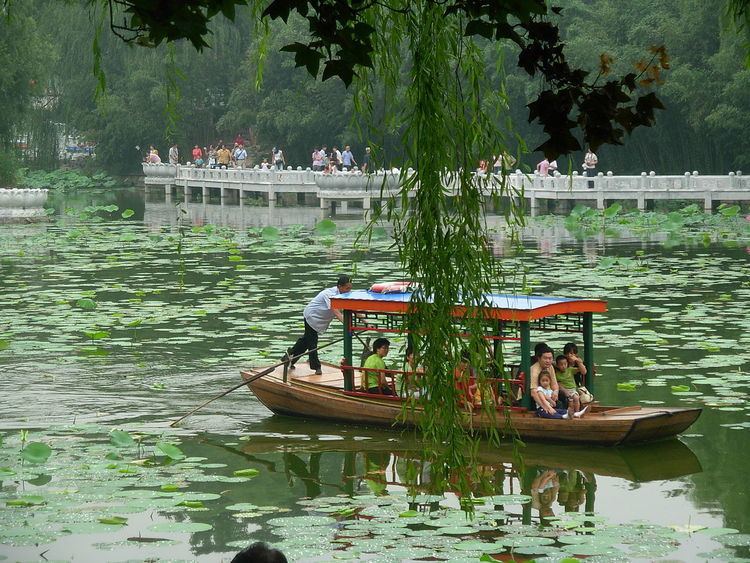Status Open all year Phone +86 10 8841 2800 | Area 47 ha | |
 | ||
Created 1159 (Lake)1577 (Original)1954 (Current Park) Owned by Beijing Municipal Administration Center of Parks Address 35 Zhongguancun S St, ZiZhu Qiao, Haidian Qu, Beijing Shi, China, 100048 Hours Closing soon · 6:30AM–9PMThursday6:30AM–9PMFriday6:30AM–9PMSaturday6:30AM–9PMSunday6:30AM–9PMMonday6:30AM–9PMTuesday6:30AM–9PMWednesday(Qingming Festival)6:30AM–9PMHours might differSuggest an edit Similar Taoranting Park, Beihai Park, Zhongshan Park, Fragrant Hills Park, Summer Palace | ||
Purple bamboo park part4
Purple Bamboo Park (Chinese: 紫竹院公园; pinyin: Zǐ Zhú Yuàn Gōngyuán; also called Zizhuyuan Park or Black Bamboo Park) is one of the seven largest parks in Beijing, China. It is located in the Haidian District of northwestern Beijing.
Contents
The park consist of three connecting lakes covering over a total area of 48 hectares. The lakes' eastern shores consist of several small hills, and they were formed with the earth dredged from the lakes, to balance the natural hills on the western shores of the lakes. There are five bridges connecting the lakes, islands and hills into a single integrated area. To the north of the lakes the Changhe River flows through.
Typical of classical Chinese garden style, and like many of Beijing's parks and gardens, it is a mountain-water landscaped garden. Constructed around canals and large lakes, the Bamboo Park is known for its liberal use of verdant bamboo groves. The garden has a variety of bamboos on display, with the variety ranging as much as up to 50 species. There is also an art museum located within the park.
The 3 lakes in the park was formed in 1159. During Ming Dynasty, the Wanli Emperor built a royal garden on the bank of the lake in 1577, and the bamboo was planted. In 1954, the park was rebuilt and open to public.
During the 2008 Summer Olympics, it was selected as one of the three protest zones.
